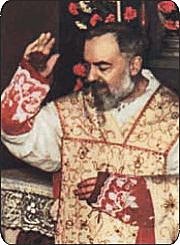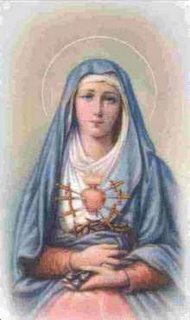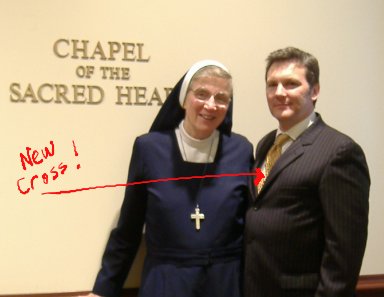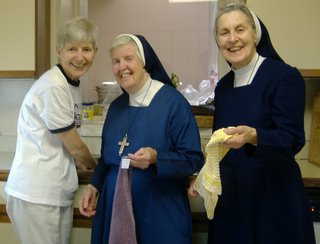It's easy to get lost in some of the details of today's Gospel. The wise virgins, for example, are not exactly exemplars of charity when they send the unwise out to purchase oil. Most readers and "pray-ers" who spend time with this passage will, no doubt, recognize that the Lord's focus is on the preparedness of the wise virgins -- and not their posture toward sharing. The parable itself, when considered in light of those that surround it in chapters 24 and 25 of Matthew's Gospel, indicates that the encounter with the Lord, the bridegroom, is symbolic for the day of judgment. Indeed, the parables of kingdom do point toward the day of judgment. This parable, however, also speaks to our daily life -- those many days between now and judgment day.
The wise virgins were ready for the bridegroom when he arrived. They heard the shout, they trimmed their lamps and went with him into the wedding banquet. This is an invitation for all of us to be ready to greet Christ when he comes into our daily life -- not only on the day of our judgment. We are called to be alert and attentive to his presence everyday. Sometimes it is easy to recognize the situations in which we need to be attentive to the Lord's coming: at Mass, at prayer, etc. Other times it is not so easy to hear the shout, "Look! Here is the bridegroom." In our daily comings and goings, we encounter Christ in those whom we meet. Often it is difficult to see him in a co-worker or colleague with whom we find it difficult to keep company; sometimes it is difficult to see Christ in members of our own family or among our friends. Still, the "shout" is there and we are called to "trim our lamps" and greet Christ in those around us. And when we recognize Christ in those around us, we have a foretaste of heaven, a foretaste of that banquet to which we shall someday, we pray, be invited.
"We must consider our neighbor in God who wishes us to love and cherish him."
St. Francis de Sales
 Yesterday evening we were treated to a wonderful conference by our faithful chaplain, friend and brother, Father Jim Greenfield, OSFS. Father gave a wonderful beginning-of-year retreat to our faculty and Mother invited him to share some of his insights, as they related to community life. The theme of Father's presentation was that of conversion examined through the lens of "holding on" and "letting go." In his usual manner, Father combined a serious spiritual challenge with his usual good humor and genuine enthusiasm for our shared Salesian tradition.
Yesterday evening we were treated to a wonderful conference by our faithful chaplain, friend and brother, Father Jim Greenfield, OSFS. Father gave a wonderful beginning-of-year retreat to our faculty and Mother invited him to share some of his insights, as they related to community life. The theme of Father's presentation was that of conversion examined through the lens of "holding on" and "letting go." In his usual manner, Father combined a serious spiritual challenge with his usual good humor and genuine enthusiasm for our shared Salesian tradition. 







 It is fitting that the day after we celebrate the Triumph of the Cross we honor Mary as Our Lady of Sorrows. She, who stood in the shadow of the cross, is remembered for the pain and sorrow that pierced her Immaculate Heart. This memorial dates back to the 13th century, when the
It is fitting that the day after we celebrate the Triumph of the Cross we honor Mary as Our Lady of Sorrows. She, who stood in the shadow of the cross, is remembered for the pain and sorrow that pierced her Immaculate Heart. This memorial dates back to the 13th century, when the 

